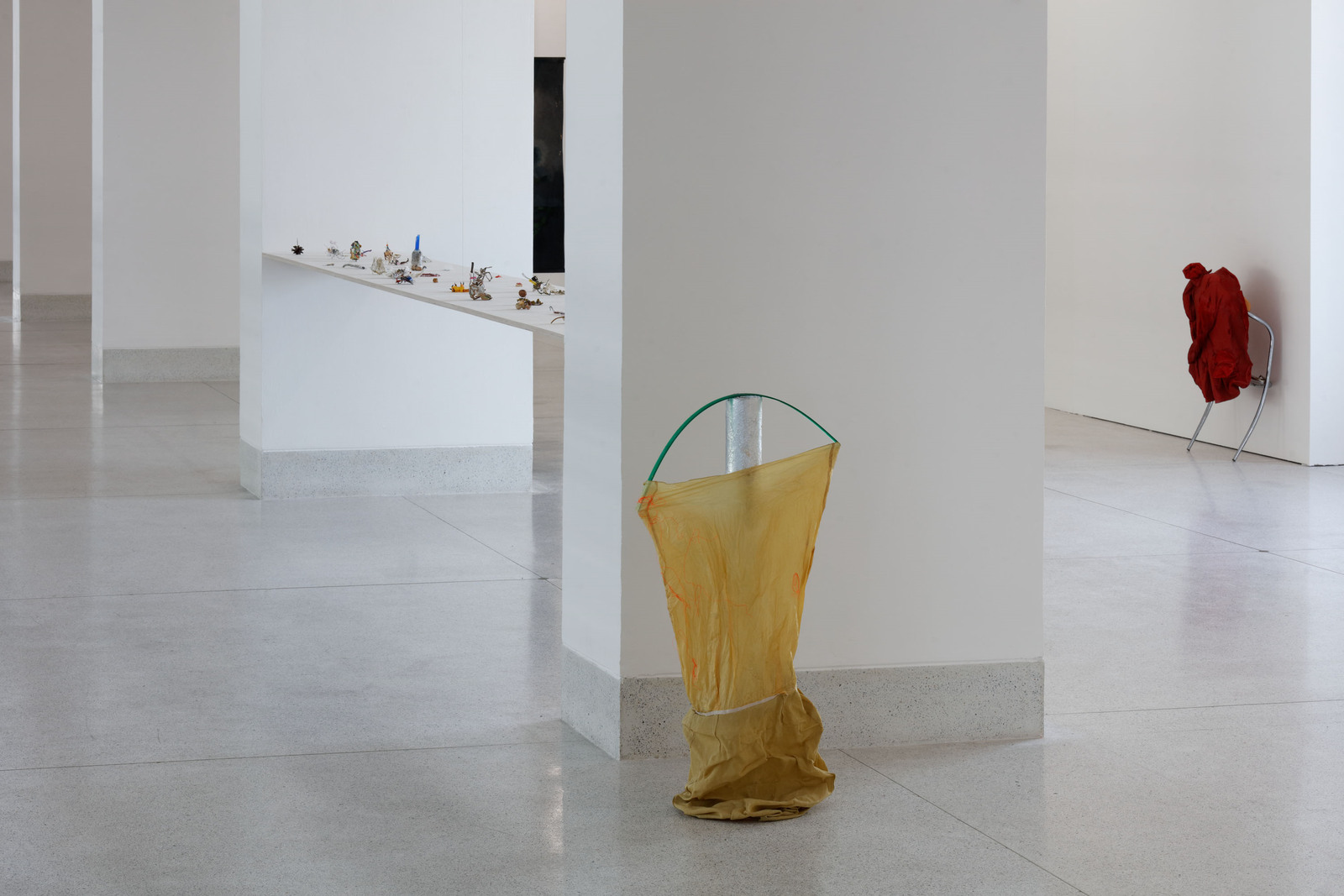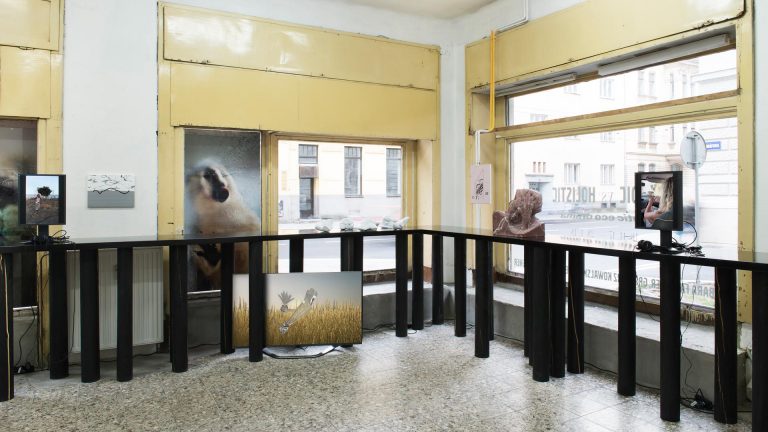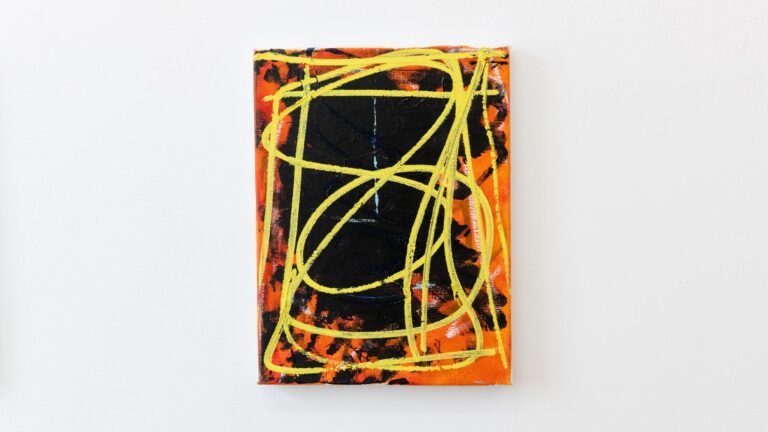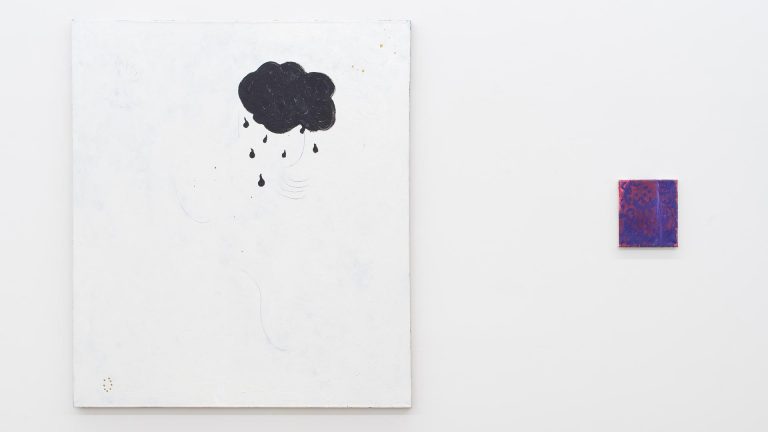Artists: Alžběta Bačíková, David Fesl, Ondřej Filípek, Kateřina Holá, Martin Lukáč, Tatiana Nikulina, Ondřej Petrlík, Johana Pošová, Anna Ročňová, Lucie Rosenfeldová, Martina Smutná, Rudolf Skopec, Viktorie Valocká
Exhibition title: Against Nature
Curated by: Edith Jeřábková and Chris Sharp
Venue: National Gallery of Prague, Prague, The Czech Republic
Date: October 5, 2016 – January 15, 2017
Photography: all images copyright and courtesy of the artists and National Gallery of Prague
In the celebratory year of its 220th anniversary, the National Gallery in Prague is proudly launching a new exhibition project, devoted to the exploration of the emerging Czech art scene. Conceived as a regular event, it expresses the Gallery’s genuine commitment to following the most interesting and innovative developments occurring within the local art community. Anti-monumental at its core, focused and concise, the survey is thematically outlined by the curatorial approach and a careful selection process, provided by a double perspective of the local and international curators. Avoiding the clichés usually associated with such projects (how the present is being defined, how the future is being foreseen and what is one’s relationship to the past), the exhibition delivers a lens through which the current emerging artistic production can be seen and critically embraced; at the same time, however, it is a promise of what comes next, a prophecy as to what a new generation’s concerns will be about and how will they contribute to the understanding and a perception of the world that surrounds us and shapes our identity and consciousness.
Against Nature is also an attempt to find themes treated by the artists, who are presented here in a tightly woven curatorial design. This approach does not include the whole range, complexity, and variety of their works, but at the same time does not violate their artistic expression with an a priori gaze. A shift towards subjective approaches that open up new ways of learning and an examination of the possibilities artists have to once again engage in empirical investigation form an unclosed chapter in the course of contemporary art. The work of all of the selected artists contains a sense for the ontological promiscuity at the heart of nature, or, to put it in a better way, shows that so-called natural things are actually quite strange. This revelation, however, is never stated clearly and openly. It simply comes about – with the relative inexplicability of nature itself. No less strange and striking is the use of combinations of materials that give rise to shapeless and unidentifiable forms, which indirectly work themselves into the difficult discussion of what is natural and what is unnatural.
It seems that, with this generation, we have stopped believing in art’s service as a critical tool and have turned our attention to art as a means of finding a path. The spheres of intuition, instinct, and imagination, prohibited until relatively recently, now once again have their place in the sun. In contrast to the role that objects played as vehicles for critical commentary in the first decade of the 21st century, the second decade has seen a process of de-objectification and the search for a new subjectivism not as weighed down by anthropocentrism. Artists no longer want to implement pre-planned approaches as in the conceptual methodology, but rather “think through creation”. They are attempting to find in art a link between two activities of the living body – work and thinking – which the age of reason had kept separated. It is thus necessary to reevaluate them once more and, as the case may be, to break up some Enlightenment polarities – working/thinking, subject/object, nature/culture, and others – and also to reformulate the fundamental question of our relationship to the natural. There are certainly many ways to deal with this issue, but those common to the artists in this exhibition are the thoughtful combination and transformation of materials; often individual and non-artistic technologies; the processual nature of, and a certain “slowness” in, their method of production; and a kind of expressivity, which is not expressivity in the traditional sense: it does not relate so much to individuals and their personal psychology, but rather to the materials and media themselves. Significant, however, is also the belief that artistic truth cannot be dissociated from form, from the manner of creation, and from the answering private questions publicly through form.
The phrase “against nature” contains within itself an acknowledgement of nature. But what sort of acknowledgment, when philosophy cannot even reach a consensus on what nature is and what it means? Must nature thus only be acknowledged today by demarcation or by reference to it as some sort of abstract category? The title Against Nature comes from the English translation of J. K. Huysmans’s symbolist classic À rebours, published in 1884. While the novel’s main character, Des Esseintes, prefers naturalism and materialism over idealism and mysticism, the artists included in this exhibition mix all these “isms” together and create an all-encompassing formalism of diverse personal and distinctive shapes, in which form and technique are perfectly harmonised with their content. It is this very breakdown of the borders of Enlightenment polarities that ensures a dialogue between this group of artists and contemporary European philosophy and production of art. Despite their contemporary nature, though, these works are not merely an indication of the present moment. The art in Against Nature is grounded in the formal and historical foundations of particular disciplines, and achieves a certain degree of timelessness. Edith Jeřábková & Chris Sharp
Rudolf Skopec and Ondřej Filípek, installation view, 2016
Ondřej Filípek, Pillar 1 – 3, 2015, plaster and steal, Dimensions variable
Rudolf Skopec, Discretion of Art, 2016, silver gelatin prints, Dimensions variable
Johana Pošová, Like Nothing, 2016, mixed media, Dimensions variable
Anna Ročňová, Net, 2016, mixed media. Untitled, 2014. 225 x 30 x 40 cm, mixed media, 167 x 180 x 40 cm
Ondřej Petrlík, Untitled, 2014, oil pastel on paper, Dimensions variable
Anna Ročňová, Leaf, 2016, mixed media, 50 x 80 x 34 cm
Viktorie Valocká, Hydra, 2016, mixed media, 230 x 161 cm; Radim like a Lion, 2015, mixed media, 154 x 174 cm
David Fesl, from the series Ocean Floor, 2015-2016, mixed media, Dimensions variable
Kateřina Holá, Untitled, 2016, mixed media, 120 x 55 x 30 cm; Untitled, 2016, mixed media, 90 x 45 x 30 cm
Kateřina Holá, Untitled, 2015, mixed media, 180 x 160 cm; Untitled, 2016, mixed media, 64 x 85 cm
Tatiana Nikulina, She, 2015, mixed media, 180 x 60 x 60 cm; Ten, Nine, Eight, Seven, 2015, mixed media, 150 x 38 x 38 cm
Martin Lukáč, installation view, 2016
Alžběta Bačíková, Lucie Rosenfeldová, Martina Smutná, Fading Relationship, 2016, mixed media, Dimensions variable






















